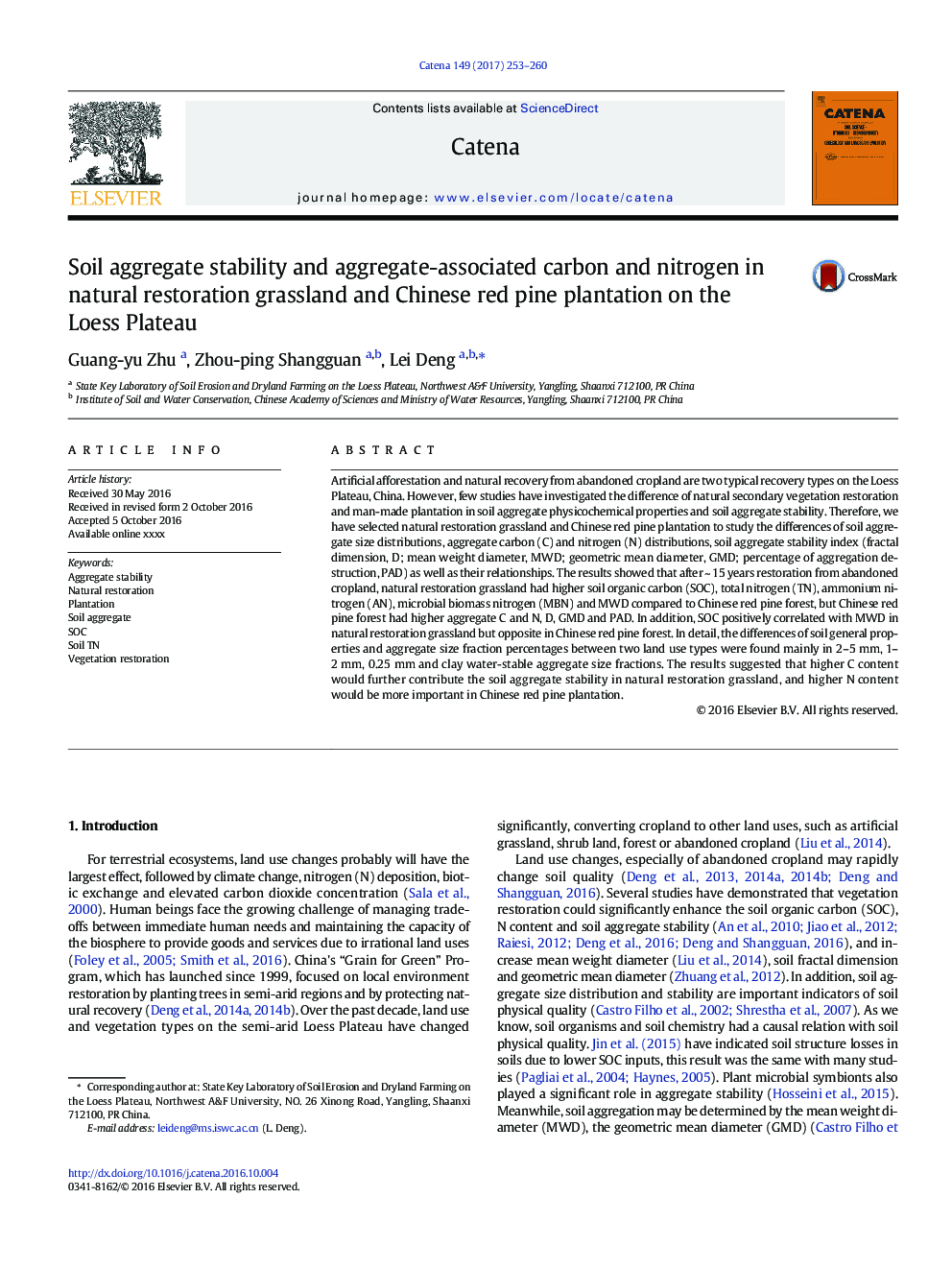| Article ID | Journal | Published Year | Pages | File Type |
|---|---|---|---|---|
| 10997832 | CATENA | 2017 | 8 Pages |
Abstract
Artificial afforestation and natural recovery from abandoned cropland are two typical recovery types on the Loess Plateau, China. However, few studies have investigated the difference of natural secondary vegetation restoration and man-made plantation in soil aggregate physicochemical properties and soil aggregate stability. Therefore, we have selected natural restoration grassland and Chinese red pine plantation to study the differences of soil aggregate size distributions, aggregate carbon (C) and nitrogen (N) distributions, soil aggregate stability index (fractal dimension, D; mean weight diameter, MWD; geometric mean diameter, GMD; percentage of aggregation destruction, PAD) as well as their relationships. The results showed that after ~Â 15Â years restoration from abandoned cropland, natural restoration grassland had higher soil organic carbon (SOC), total nitrogen (TN), ammonium nitrogen (AN), microbial biomass nitrogen (MBN) and MWD compared to Chinese red pine forest, but Chinese red pine forest had higher aggregate C and N, D, GMD and PAD. In addition, SOC positively correlated with MWD in natural restoration grassland but opposite in Chinese red pine forest. In detail, the differences of soil general properties and aggregate size fraction percentages between two land use types were found mainly in 2-5Â mm, 1-2Â mm, 0.25Â mm and clay water-stable aggregate size fractions. The results suggested that higher C content would further contribute the soil aggregate stability in natural restoration grassland, and higher N content would be more important in Chinese red pine plantation.
Related Topics
Physical Sciences and Engineering
Earth and Planetary Sciences
Earth-Surface Processes
Authors
Guang-yu Zhu, Zhou-ping Shangguan, Lei Deng,
